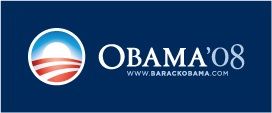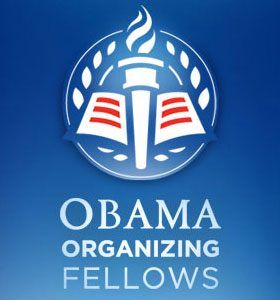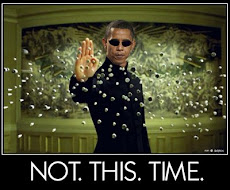Sunday, October 28, 2012
Russell Charles Means ,Great Oglala Sioux
RUSSELL MEANS SPECIAL: The Decline of American Culture (10/22/2012)
Russell Charles Means (November 10, 1939 – October 22, 2012) was an Oglala Sioux activist for the rights of Native American people and political activist. He became a prominent member of the American Indian Movement (AIM) after joining the organization in 1968, and helped organize notable events that attracted national and international media coverage.
Means was active in international issues of indigenous peoples, including working with groups in Central and South America, and with the United Nations for recognition of their rights. He was active in politics at his native Pine Ridge Indian Reservation and at the state and national level.
Beginning an acting career in 1992, he appeared in numerous films and released his own music CD. He published his autobiography Where White Men Fear to Tread in 1995.
Means was born in Pine Ridge, South Dakota, a community located in the Pine Ridge Indian Reservation, to Theodora Feather and Harold "Hank" Means. He was baptized Oyate Wacinyapin, which means "works for the people" in the Lakota language. His Oglala Sioux parents met as students at an Indian boarding school.
In 1942, when Russell was three, the Means family resettled in the San Francisco Bay Area, seeking to escape the poverty and problems of the reservation. His father worked at the shipyard. Means grew up in the Bay area, graduating in 1958 from San Leandro High School in San Leandro, California. He attended four colleges but did not graduate from any of them. In his 1995 autobiography, Means recounted a harsh childhood; his father was alcoholic and he himself fell into years of "truancy, crime and drugs" before finding purpose in the American Indian Movement in Minneapolis.
His father died in 1967, and in his 20's, Means lived in several Indian reservations throughout the United States while searching for work. While at the Rosebud Indian Reservation in south-central South Dakota, he developed severe vertigo. Physicians at the reservation clinic believed that he had been brought in inebriated. After they refused to examine him for several days, Means was finally diagnosed with a concussion due to a presumed fist fight in a saloon. A visiting specialist later discovered that the reservation doctors had overlooked a common ear infection, which cost Means the hearing in one ear.
After recovering from the infection, Means worked for a year in the Office of Economic Opportunity, where he came to know several legal activists who were managing legal action on behalf of the Lakota people. After a dispute with his supervisor, Means left Rosebud for Cleveland, Ohio. In Cleveland, he worked with Native American community leaders against the backdrop of the American Civil Rights Movement.
Russell Means Interview
No truer words have ever been stated about the evils prevalent in this country known as the United States of America, a country built upon greed. Until America revises its stance to righteous living, then its eventual downfall is to be seen in the annals of time and history as all empires of the world have been been shown to dissolve. This man is so intelligent that he spews wisdom the like the world has rarely known. He is competent and capable of analyzing the predicament of the American Indian. I have a close concern for the Native American, especially since they are a part of my family on both sides even though we never search it out, but we know it is accurate. This sense of attachment needs to be preserved and passed down through the family line.
Posted by Marileeza
Russell Means :Our Part of Worldwide Wreckage
In 1968 at age 29, Means joined the American Indian Movement (AIM), where he rose to become a prominent leader.[6] Means participated in the 1969 Alcatraz occupation. In 1970, Means was appointed AIM's first national director, and the organization began a period of increasing protests and activism
On Thanksgiving Day 1970, Means and other AIM activists staged their first protest in Boston: they seized the Mayflower II, a replica ship of the Mayflower, to protest the Puritans' and United States' mistreatment of Native Americans.[7] Later that year, Means was one of the leaders of AIM's takeover of Mount Rushmore, a federal monument.[citation needed]
In 1972, he participated in AIM's occupation of the Bureau of Indian Affairs (BIA) headquarters in Washington, D.C. Many confidential records were taken or destroyed, and more than $2 million in damages was done to the building.[citation needed]
In 1973, Dennis Banks and Carter Camp led AIM's occupation of Wounded Knee, which became the group's most well-known action.[7] Means appeared as a spokesman and prominent leader as well. The armed standoff of more than 300 Lakota and AIM activists with the Federal Bureau of Investigation (FBI) and state law enforcement lasted for 71 days. A visiting Cherokee from North Carolina and an Oglala Lakota activist from Pine Ridge Reservation were killed in April 1973. Earlier an FBI agent was shot and became paralyzed from his wounds.
Russell Means Freedom Part 1
Russell Means Freedom Part 2
Russell Means - Freedom is Your Responsibility
Mount Rushmore: One of America's greatest national monuments is,
to Native Americans, one of the most inflammatory and blasphemous
symbols of what was taken from them.
LRI Tribute to Russell Means
Subscribe to:
Posts (Atom)









































